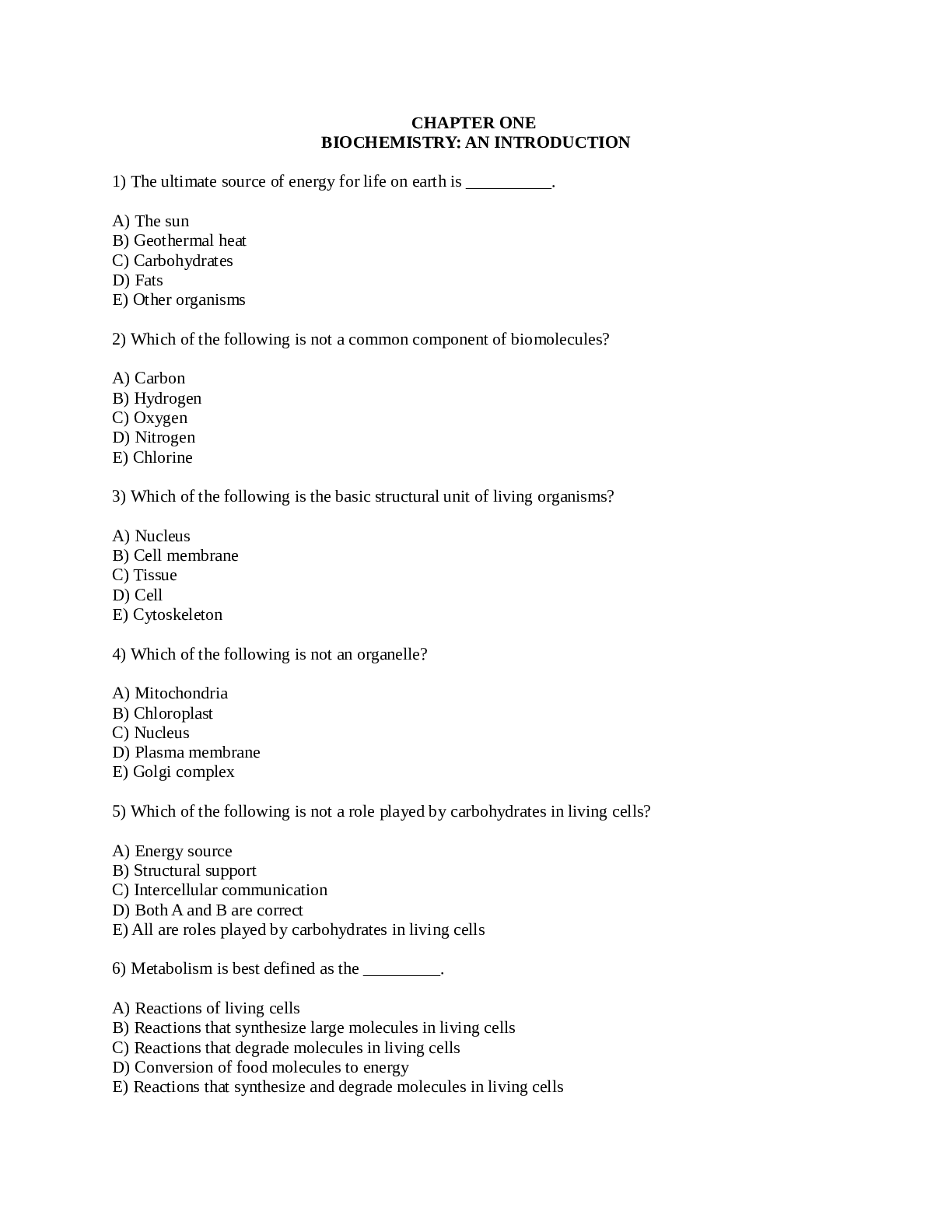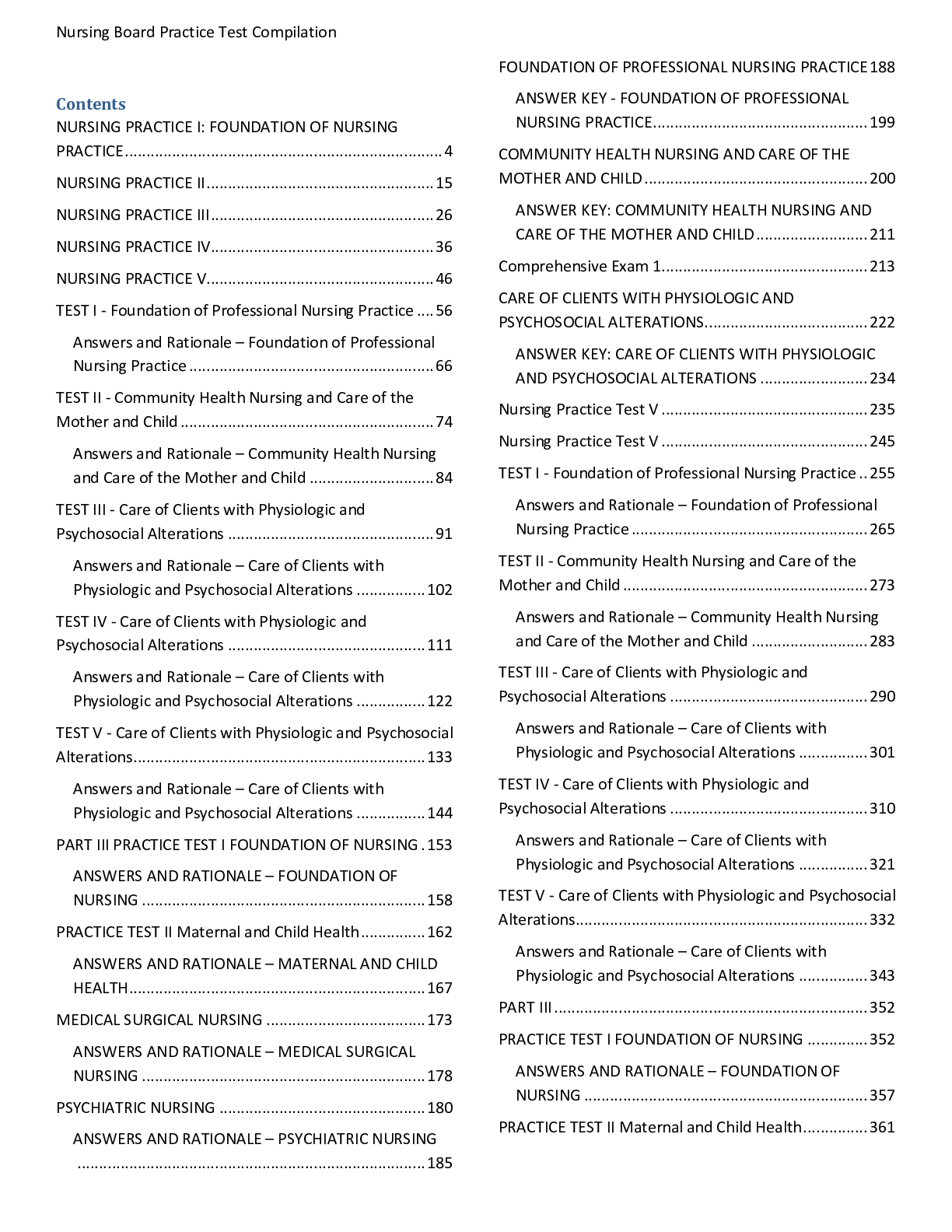Chemistry > TEST BANK > Molecular Structure and Covalent Bonding Theories Test Bank Latest Updated 2021 (All)
Molecular Structure and Covalent Bonding Theories Test Bank Latest Updated 2021
Document Content and Description Below
MULTIPLE CHOICE 1. The electrons in the outer shell of an atom are involved in bonding. Another name for the outer shell is ____. a. valence shell b. bonding shell c. hybridized shell d. VSEPR s... hell e. Lewis shell ANS: A OBJ: Define valence shell. TOP: Valence Electrons 2. The valence shell is a. the highest energy level occupied by electrons. b. the set of orbitals used to make triple bonds. c. the orbitals belonging to the entire molecule. d. the lowest energy level occupied by electrons. e. the hard covering on crustaceans. ANS: A OBJ: Define valence shell. TOP: Valence Electrons 3. What is the electronic geometry for 6 regions of high electron density on a central atom? a. octahedral b. square planar c. tetrahedral d. trigonal bipyramidal e. trigonal planar ANS: A OBJ: Identify the electron geometry given the number of electron groups surrounding the central atom. TOP: Valence Shell Electron Pair Repulsion (VSEPR) Theory 4. Which of the following do not count as regions of high electron density with respect to the central atom in a molecule? a. single bonds b. lone pairs on an outer atom c. lone pairs on the central atom d. double bonds e. triple bonds ANS: B OBJ: Identify electron groups which define the electron geometry around the central atom. TOP: Valence Shell Electron Pair Repulsion (VSEPR) Theory Whitten 10e Test Bank 5. The electronic geometry is a. the arrangement of atoms around the central atom in a molecule. b. the arrangement of H atoms around the central atom in a molecule. c. the arrangement of regions of high electron density around the central atom in a molecule. d. the arrangement of lone pairs around the central atom in a molecule. e. the sets of quantum numbers for a central atom. ANS: C OBJ: Define electron geometry. TOP: Valence Shell Electron Pair Repulsion (VSEPR) Theory 6. What is the electronic geometry for 3 regions of high electron density on a central atom? a. octahedral b. square planar c. trigonal bipyramidal d. tetrahedral e. trigonal planar ANS: E OBJ: Identify the electron geometry given the number of electron groups surrounding the central atom. TOP: Valence Shell Electron Pair Repulsion (VSEPR) Theory 7. What angle(s) are associated with a central atom that has trigonal bipyramidal electronic geometry? a. 109.5 b. 120 c. 120 and 180 d. 90 and 120 e. 90 and 180 ANS: D OBJ: Identify the angles between electron groups given the electron geometry. TOP: Valence Shell Electron Pair Repulsion (VSEPR) Theory 8. What angle(s) are associated with a central atom that has tetrahedral electronic geometry? a. 109.5 b. 120 c. 120 and 180 d. 90 and 120 e. 90 and 180 ANS: A OBJ: Identify the angles between electron groups given the electron geometry. TOP: Valence Shell Electron Pair Repulsion (VSEPR) Theory 9. The phosphorus pentachloride molecule is nonpolar and contains no lone (unshared) electron pairs on the phosphorus atom. What are all of the possible ClPCl bond angles? a. 120 b. 180 c. 109.5 d. 90, 120, and 180 e. 90 and 180 Whitten 10e Test Bank ANS: D OBJ: Identify the angles between electron groups given the molecule name, polarity, and number of lone pairs on the central atom. TOP: Valence Shell Electron Pair Repulsion (VSEPR) Theory 10. Which of the following is not one of the basic ideas of the VSEPR theory? a. Each electron group in the valence shell of a central atom is significant. b. The groups of valence shell electrons on the central atom repel one another. c. The groups of valence shell electrons are arranged about the central atom so that the repulsions among them are as small as possible. d. The electron groups have maximum separation about the central atom. e. The number of electron groups is determined by counting the number of lone pairs and the total number of bonds. ANS: E OBJ: Identify the tenets of VSEPR theory. TOP: Valence Shell Electron Pair Repulsion (VSEPR) Theory 11. Which of the following statements concerning polar molecules is false? a. There must be at least one polar bond or one unshared pair of electrons on the central atom. b. If there are more than one polar bond, they must not be symmetrically arranged so that their polarities cancel. c. If there are more than one unshared pair of electrons on the central atom, they must not be symmetrically arranged so that their polarities cancel. d. There must be an odd number of polar bonds so that their polarities not cancel. e. A molecule with symmetrically arranged polar bonds can be polar if the central atom is bonded to atoms of different elements. [Show More]
Last updated: 1 year ago
Preview 1 out of 40 pages
Instant download
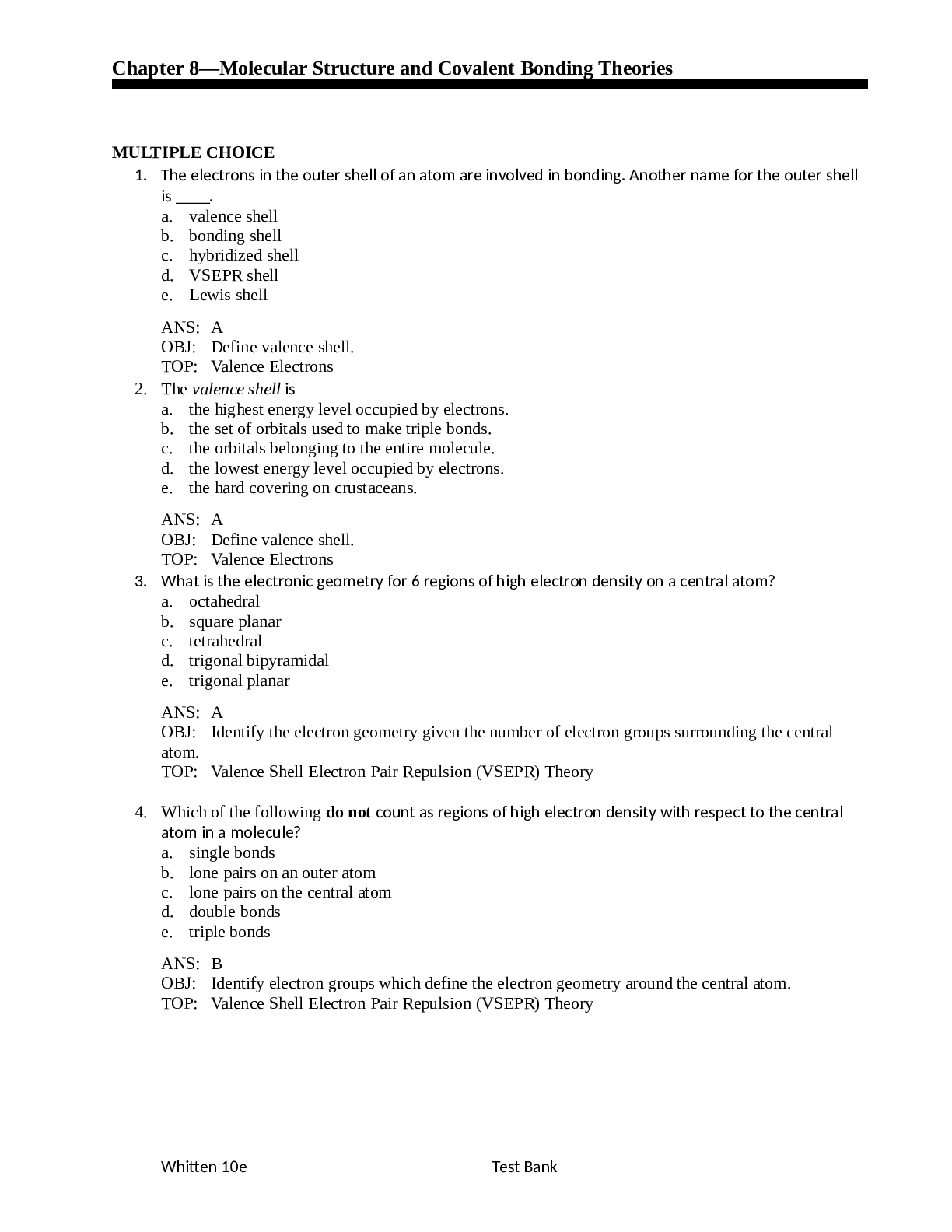
Buy this document to get the full access instantly
Instant Download Access after purchase
Add to cartInstant download
Reviews( 0 )
Document information
Connected school, study & course
About the document
Uploaded On
Sep 03, 2021
Number of pages
40
Written in
Additional information
This document has been written for:
Uploaded
Sep 03, 2021
Downloads
0
Views
76



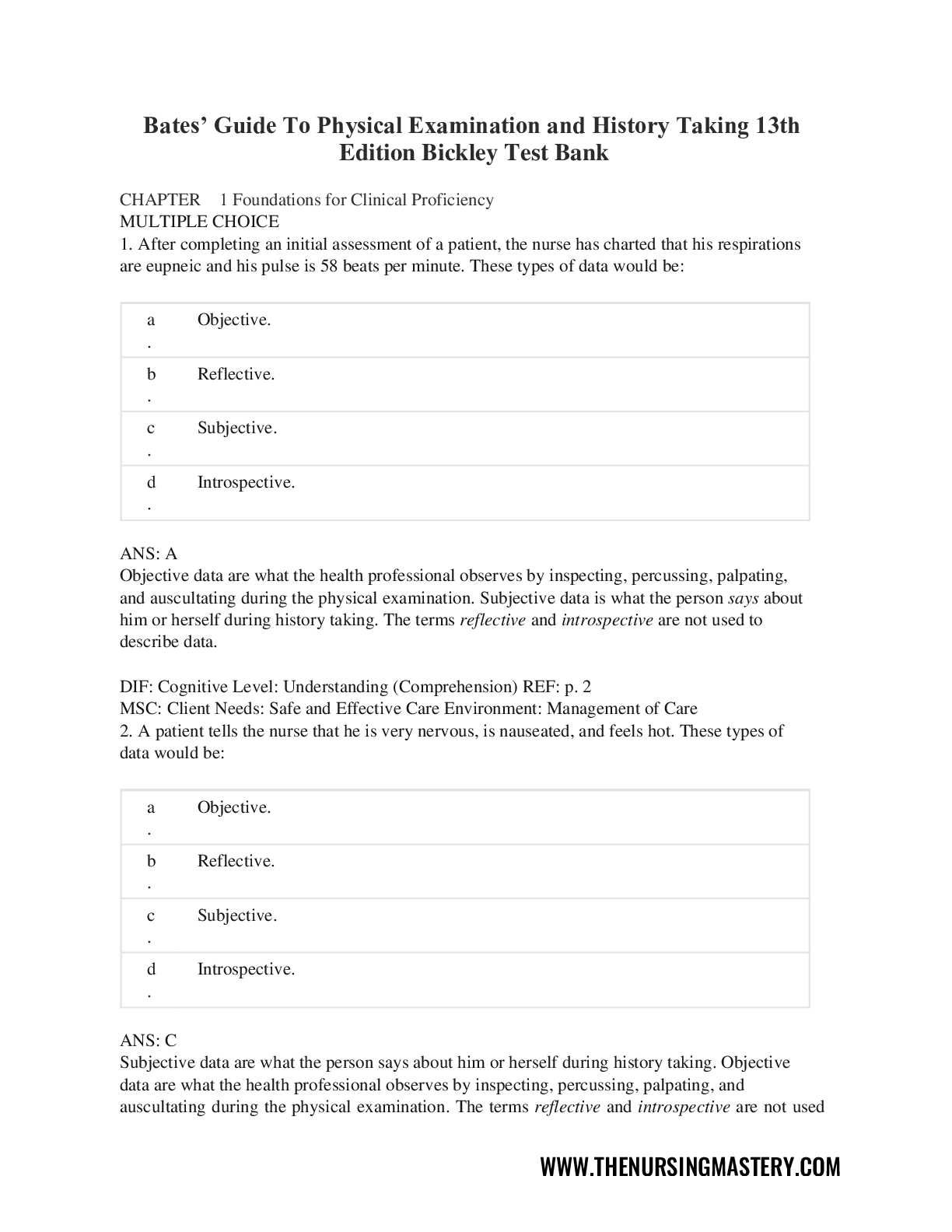
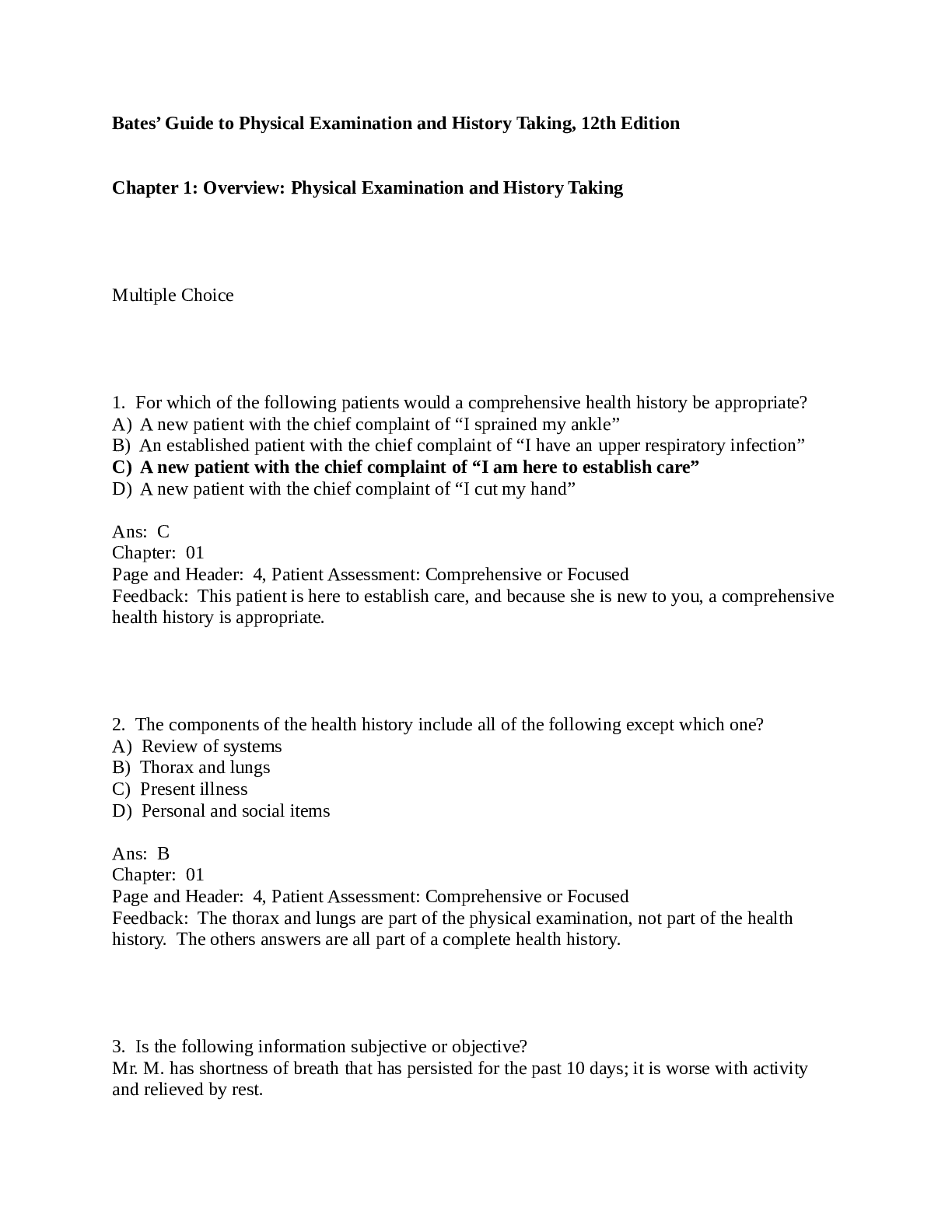
.png)
.png)
.png)

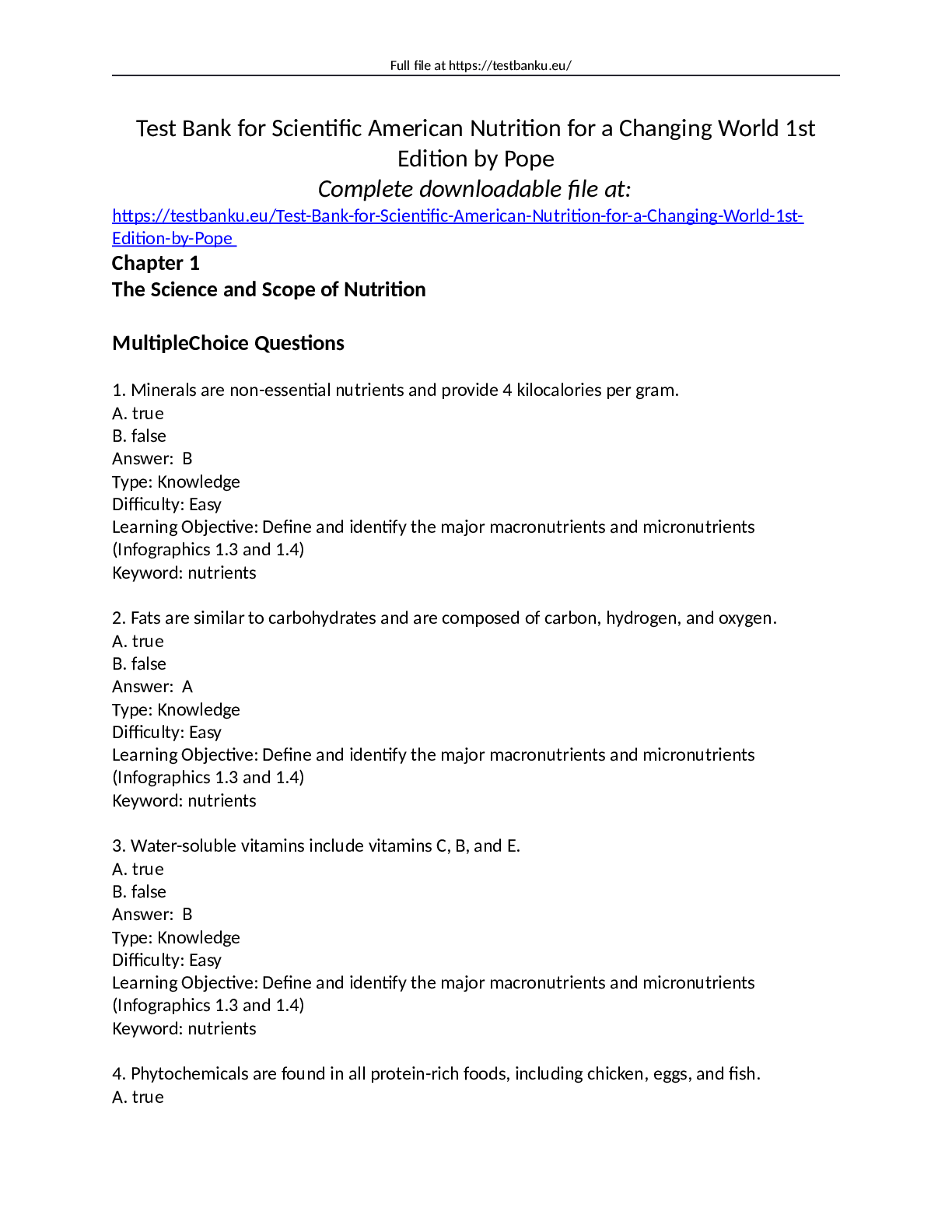
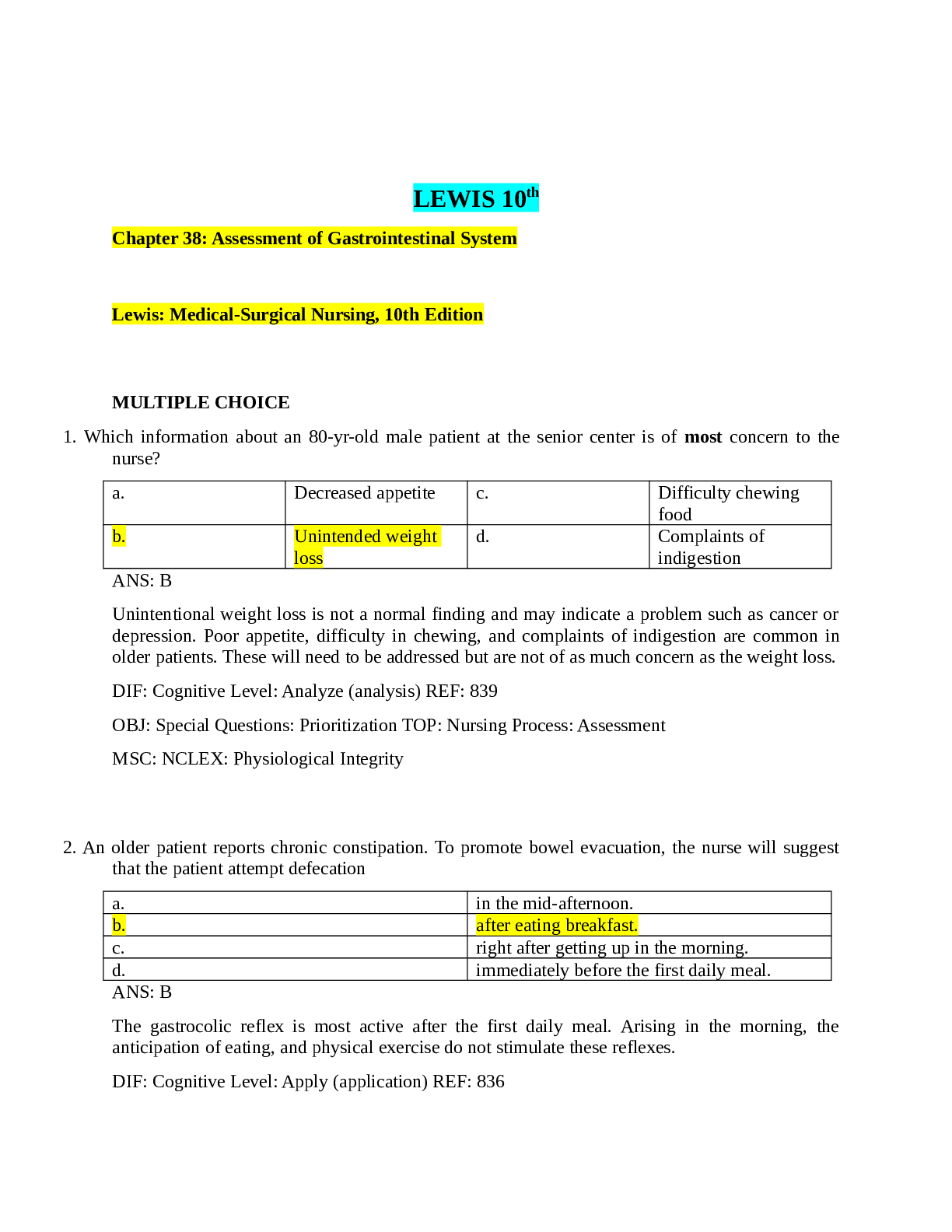

.png)




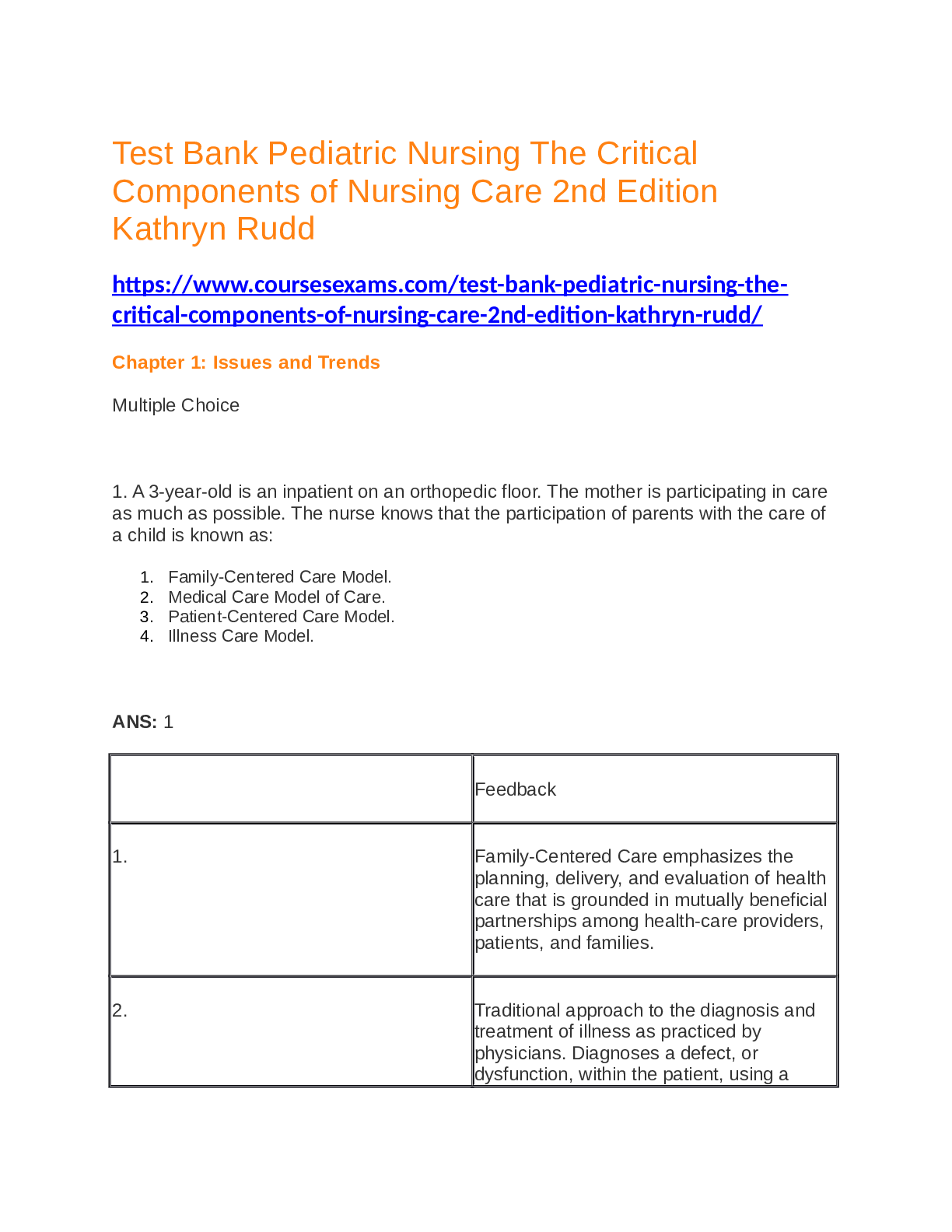



.png)
